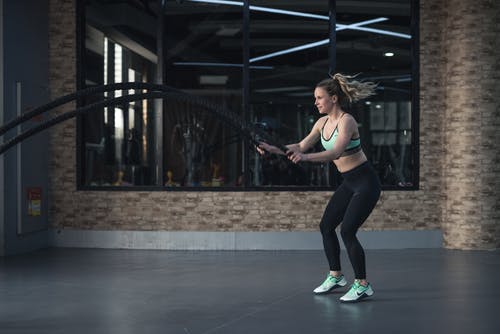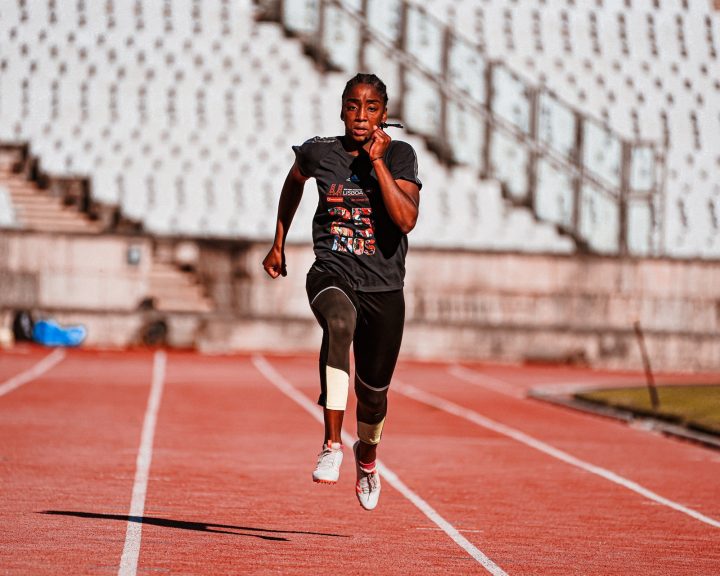Rest and recovery are important matters for an athlete. This is an area that it is easy to make mistakes on for a number of reasons. First, athletes are motivated to push themselves. By this I mean that some of them want to improve, want to train hard, and are going to view time off as a negative – after all, if you aren’t training then you aren’t getting better! Second, athletes do more than train in a strength and conditioning setting. Often, strength and conditioning coaches do a great job of accounting for their own training but do not factor in everything else. This is a mistake because everything else adds up in terms of demands on the athlete. Third, athletes play more games and have longer seasons than in the past. This is obvious at the highest levels, but even at the youth level kids play their sport year round. While we can philosophically oppose this as coaches, it’s the reality of sports today. Ignoring it won’t help the athletes, so we have to account for that.
Rest and recovery can be viewed on several levels. There’s the workout itself for the most basic level. There’s within the training program as another level. Finally, there’s the big picture of the training year. This blog will have some thoughts on each of these levels.
Looking at the training session:
Rest during a training session is going to have a huge impact on how the athlete performs and what kind of adaptations they make in a training session. Simply put, the heavier the athlete trains, the more complex the exercise, the more speed/power that is required, the more rest the athlete is going to need within a training session. On the other hand, if we want the athlete to be able to function in the presence of fatigue, they will want less rest in the training session.
Are there “rules” on this? Yes, but always with exceptions. In general, at 2-3 minutes we’re as recovered as we’re going to get physiologically. Now, psychologically we might require more, but 2-3 minutes is a good guideline as (in my opinion) one of the roles of strength and conditioning is to build mental toughness. So below are my thoughts on this:
|
Goal |
Sets x Reps x Intensity |
Rest |
|
Maximal strength |
3-5 x 1-8 x 80%+ |
2-3 minutes |
|
Power |
3-5 x 1-6 x 60-80% |
2-3 minutes |
|
Hypertrophy |
3-5 x 8-15 x 60-80% |
30-60 seconds |
|
Conditioning |
Timed sets |
Sport specific |
Plyometrics, conditioning, speed, and agility are a little more complicated than the weight room and really need their own post. Some of this is sport specific, some of this is distance specific. For example, someone running 150 meter sprints needs more time in-between each sprint than someone running 10 meter sprints. Longer, more complex agility drills require more time than shorter, simpler drills, etc.
Looking at the training week:
This is where things get really complicated. Here you have to factor in sports practice, travel, games, and the strength and conditioning. This factoring is one of the reasons that strength and conditioning backs off during the in-season, there’s just too many demands on the athlete to continue strength and conditioning at a high level with a great deal of frequency.
I try to organize training by quality, i.e. so that we place similar demands on an athlete across all training platforms in a given day. Ideally we train a different quality on the next day. For example:
|
Monday |
Tuesday |
Wednesday |
Thursday |
|
|
Strength |
Maximal strength session |
N/A |
N/A |
N/A |
|
Power |
N/A |
Olympic lifts Plyometrics |
N/A |
N/A |
|
Hypertrophy |
N/A |
N/A |
N/A |
Lower body training |
|
Speed |
Acceleration |
N/A |
N/A |
Maximal velocity |
|
Agility |
Short distance |
N/A |
N/A |
Long distance drills |
|
Conditioning |
N/A |
N/A |
Conditioning session |
N/A |
|
Sport |
Offensive drills |
Scoring drills |
N/A |
Defensive drills |
In the table above, Monday represents an all-out effort, short duration approach. Tuesday is focused on short duration, explosive movements. Wednesday is mostly a recovery day, the approach being that the conditioning sessions helps the athlete to recover by doing something. Thursday is a day focused on longer duration activities.
I recognize that this is an ideal world. It shows why strength and conditioning coaches need to be familiar with the sport, need good communication with the athlete and sports coaches, and why strength and conditioning cannot take place in isolation.
Looking at the training year
Classic periodization has a transition time after the season. Sometimes this is called transition, sometimes rest/recovery. The idea is that the athlete takes time away from the sport, recovers mentally, and allows for injuries/aches/pains to heal. This time represents a transition between the season and beginning formal off-season training.
Everyone needs time away, but too much time is going to be detrimental to performance. This is a controversial statement given the importance of rest and recovery. In baseball, every year athletes come into spring training having done no throwing during the off-season. The result is shoulder issues for them because they haven’t kept their arms in shape. On the other extreme, too much work keeps the athlete broken down. So what’s to be done?
First, athletes need to step away for a week or two. Vacation, time off, something. During this time, they should still be active – just no formal training. Play golf, play basketball, do something to stay active. Second, gradually ease back into organized training. This is a great time to honestly examine deficiencies and address them. Without travel, organized practices, and games there is less overall stress on the athlete. Finally, even at the highest level it makes sense to have a period of general fitness training. It allows for variety, forces the athlete to learn new things, and builds a fitness base that the athlete is going to need later on.




1 thought on “Rest And Recovery In The Training Of Athletes”
Well said.
Comments are closed.